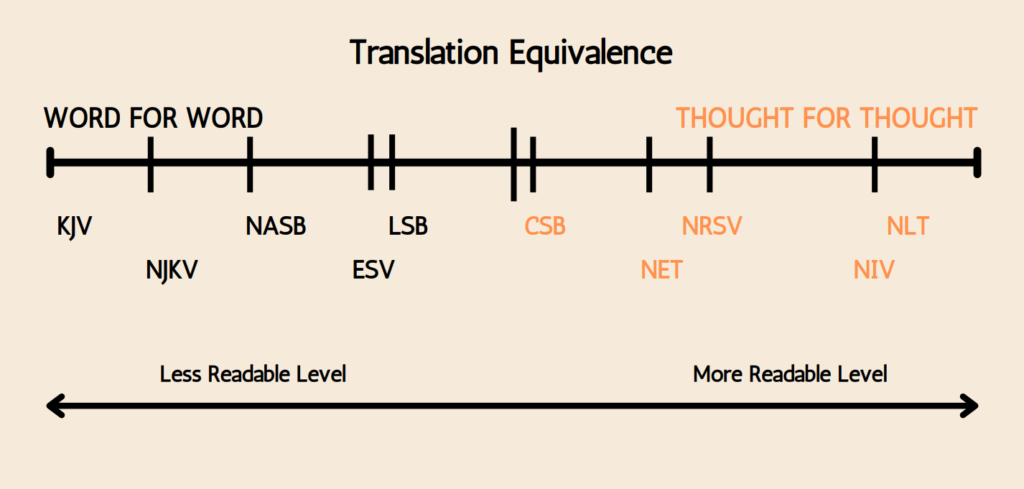I will answer the question, *What’s the Best Bible Translation? When I say the Best Bible translation, I mean the best one for you to use. To be very truthful with you, there are a lot of Bible translations, and people will tell you one translation is better than another translation. But what they don’t tell you is there’s no perfect translation. I’m not saying the Word of God isn’t inspired and perfect, I’m saying no Bible translation is perfect. I’ll explain what I mean by that as we go forward.
Thanks for joining this episode of Sonday Life. The mission of Sonday Life is to make every day Sonday by growing your spiritual relationship with Jesus Christ. If you’ve ever desired to strengthen your relationship with Christ or imagined how you can make Jesus a more intimate part of your daily activities and conversations, that’s our purpose at Sonday Life.
Now, let’s dive right in and answer the question, “What’s the Best Bible Translation?” By the end of this video, you’ll have three keys for choosing the Best Bible Translation: Bible Translation History Chart.
This chart shows the development of our Bible translations going back to the Most Ancient manuscripts. We don’t have any Original Manuscripts, but the ancient manuscript copies are from original manuscripts. Often, different translations are associated with different Christian denominations. For instance, the standard Bible for the Catholic church was the Latin Vulgate, which was translated by Jerome around 390 AD. But after the 2nd Vatican Council in 1965, the Catholic church allowed the New American Bible (NAB) and the Revised Standard Bible (RSB). Most Protestant churches have their roots in the King James Bible, which was first translated in 1611. But as you see from the chart, there were several Bible translations before King James, going back to 1382 when Wycliffe translated the Vulgate into English. Tyndale utilized a separate Greek text in 1525 for his Bible translation, which was used by all the other translations leading up to King James.
To understand why there aren’t any perfect translations, let’s look at the beginnings of Bible translations, which were the *Original Writings. The language of Jerome in 390 AD and King James in 1611 is very different from today, and finding equivalent words is difficult. Languages change, and the meaning of words change. For instance, in the 60’s, ‘groovy’ was a popular word. If someone translated a document from the sixties, how would they translate ‘groovy’? The equivalent word just sixty years later would be ‘dope.’ But dope meant something very different in the sixties. Words evolve, and it’s extremely difficult to know word equivalence for a word that was spoken a thousand or two thousand years ago. Another fact is since 390 and 1611, we’ve had thousands of discoveries in archaeology, biblical scholarship, and ancient manuscript discoveries that they didn’t have then to know how words were used in earlier times.
As an example, Abraham and Jacob both spoke a Semitic language. Moses spoke an ancient form of the Hebrew language. It wasn’t until around 1,200 BC that the Hebrew language became more formalized, but even then, because they were living among other Semitic cultures, the same Hebrew wasn’t spoken everywhere. Have you ever had a conversation with someone from New Orleans or Boston? It’s like that. Now think how, over 3,200 years, the meaning of words can change. Then, add to this the Hebrew language has a long history of symbolic and interpretive meanings associated with its letters. The arrangements of letters, words, and sounds could have deeper meanings.
In the Classical Greek language, the meaning of words depended on word inflection, tense, case, mood, tone, aspect, person, etc. How do you decide on the exact equivalence for an English translation?
So that’s your first key to remember: No Bible translation is perfect.
Bible Translations are categorized as either Formal Equivalence (meaning Word for Word) or Dynamic Equivalence (meaning Thought for Thought). There’s also a paraphrase of Bibles, which aren’t translations: The Living Bible, The Amplified Bible, The Message, etc.
Translation Equivalence Chart Show the different translations from Proverbs 25:26;
KJV/NLT [KJV 1611, NLT 1996]
NJKV/NIV [NJKV 1979, NIV 1978]
NASB/NET [NASB 1971, NET 2001 then 2019]
ESV/NRSV [ESV 2008, NRSV 1989]
LSB/CSB [LSB 2021, CSB 2017]
So, which translation is the best? It depends on you and how you will use your Bible.
So the second key in knowing which translation is best is: Which translation is best for you? If you’re using it for personal Bible reading and devotionals, then choose a Bible you like to read. If you don’t like the Bible, then you won’t read it. It’s better that you read any Bible than no Bible at all.
The third key in knowing which translation is best is: Which translation does your fellowship use? If you’re using your Bible for Sonday Life or any Bible study or church service, then choose a Bible your study group, teacher, or Pastor is using so it’s easy for you to follow along. If you’re teaching or preaching, choose a Bible that’s between the Formal and Dynamic Equivalence so it isn’t too difficult for others to follow along. And if you preparing to teach or preach, you’ll need to use several Bibles and Greek and Hebrew word study references and Study Bibles.

If you follow these three keys when choosing a Bible translation;
- Remember, there is no perfect Bible translation.
- Choose the translation that’s best for you.
- Use the translation of your fellowship.
You won’t go wrong. But there is one more important key in choosing the Best Bible translation.
- Using your Bible daily.
Three daily practices are helpful for a strong and passionate relationship with Christ: prayer, reading the Word, and sharing Jesus with others.


